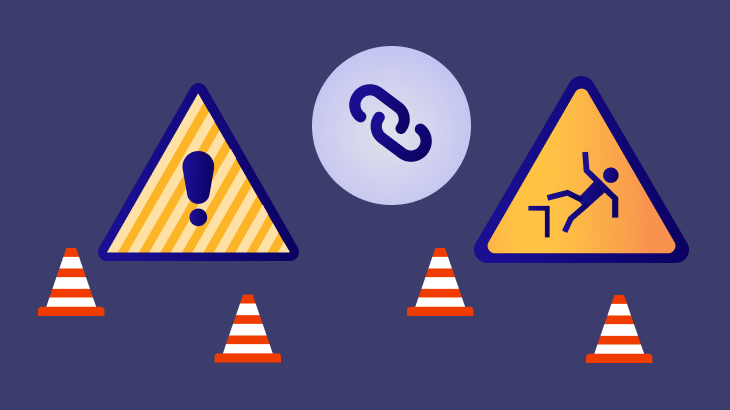Last Updated on March 24, 2025 by Becky Halls
As search engines continue to evolve and become more sophisticated, webmasters and digital marketers must adapt their strategies to keep pace with the ever-changing landscape of search engine optimization (SEO). One advanced link-building strategy that has gained traction in recent years is tiered link building. This approach is designed to maximize the impact of backlinks on a website’s search engine rankings and overall SEO performance. In this comprehensive guide, we will delve into the concept of tiered link building, its benefits, and how to execute it effectively.
Historical Context of Tiered Link Building
Tiered link building has been shaped by the evolution of search engine algorithms. As early search engines operated with simpler algorithms, basic link-building techniques sufficed.
However, as these algorithms grew more sophisticated, penalizing manipulative practices, SEO strategies had to adapt. Tiered link building emerged as an effective method to amplify link equity without triggering search engine penalties.
This strategy allows marketers to build a layered backlink profile that withstands algorithm updates while enhancing visibility and rankings.
Understanding Tiered Link Building

Tiered link building is an advanced SEO strategy that involves creating multiple layers or “tiers” of backlinks pointing to your website. The primary purpose of this approach is to amplify the link equity, or “link juice,” that flows to your site through your backlinks, thereby boosting your website’s search engine rankings and visibility.
In a tiered link-building campaign, you focus on building high-quality, relevant backlinks (Tier 1) directly pointing to your website. Subsequently, you create additional layers of backlinks (Tier 2, Tier 3, etc.) that point to your Tier 1 links, thereby strengthening their impact and increasing the flow of link equity to your site. This strategy leverages the power of both direct and indirect backlinks to maximize your website’s SEO performance.
The Benefits of Tiered Link Building

Tiered link building offers several advantages over traditional link-building strategies, including:
- Enhanced link equity distribution: By building multiple tiers of backlinks, you can amplify the link equity that flows to your website, improving its search engine rankings and visibility.
- Enhanced link equity distribution: Enhanced link equity distribution through tiered strategies allows websites to achieve a more balanced flow of authority. By diligently cultivating a wide range of backlinks, webmasters can significantly reduce dependency on single sources and mitigate risks associated with algorithm changes.
This strengthened and varied link profile not only boosts search rankings but also enhances long-term resilience, driving sustained organic growth and traffic across different areas of the site.
- Greater control over backlink profile: Tiered link building allows you to have more control over the quality and relevance of the backlinks pointing to your site. By focusing on acquiring high-quality Tier 1 links and supporting them with additional tiers, you can build a robust and diverse backlink profile.
- Improved domain authority: As you strengthen your backlink profile through tiered link building, your website’s domain authority (DA) is likely to increase. A higher DA can lead to better search engine rankings and increased organic traffic.
- Flexibility: Tiered link building offers flexibility in terms of the types of links you can build, the content you can create, and the platforms you can leverage for each tier. This flexibility enables you to adapt your strategy based on your goals, resources, and target audience.
How to Implement Tiered Link Building
To execute a successful tiered link-building campaign, you need to follow a structured approach that involves building and strengthening each tier of backlinks. Here’s how to get started:
3.1. Tier 1: Building High-Quality Backlinks
Your Tier 1 backlinks are the most critical, as they directly point to your website. Focus on building high-quality, relevant backlinks from authoritative and reputable sources. Some effective strategies for acquiring Tier 1 backlinks include:
- Content marketing
- Guest posting
- Resource link building
- Broken link building
- Skyscraper technique
- Outreach
3.2. Tier 2: Strengthening Your Tier 1 Links

Once you have established a solid foundation of Tier 1 backlinks, it’s time to strengthen them by building Tier 2 links that point to your Tier 1 links. The goal is to increase the link equity flowing to your Tier 1 backlinks and, ultimately, to your website. Some tactics for building Tier 2 links include:
- Social bookmarking: Submit your Tier 1 content to social bookmarking sites like Reddit, StumbleUpon, or Digg to generate more backlinks and increase its visibility.
- Blog commenting: Leave thoughtful, relevant comments on blogs within your niche, including a link to your Tier 1 content.
- Web 2.0 properties: Create content on Web 2.0 platforms like Blogger, WordPress.com, or Tumblr, and link back to your Tier 1 content.
- Forum posting: Participate in niche-related forums, and include a link to your Tier 1 content in your forum signature or within relevant discussions.
- Content syndication: Syndicate your Tier 1 content to platforms like Medium, LinkedIn, or industry-specific content syndication networks to generate additional backlinks.
3.3. Tier 3: Further Amplifying Your Link Profile
While not always necessary, you can further amplify your link profile by building Tier 3 links pointing to your Tier 2 links. This can be done using similar strategies as for Tier 2, but the focus should be on quantity over quality. Tier 3 links help increase the overall link equity flowing to your website but should be used judiciously to avoid over-optimization or potential search engine penalties.
Tools for Managing Tiered Link Building
Effective management of tiered link building can be significantly enhanced with the right tools. Ahrefs offers comprehensive backlink analysis, helping you track link health and identify opportunities. SEMrush provides insights into your competitors’ backlinks, offering strategies to capture similar link equity.
Moz’s Link Explorer helps monitor your site’s overall authority. These tools support the systematic organization and strengthening of each tier, allowing for targeted actions to improve your SEO outcomes.
Common Mistakes in Tiered Link Building
Implementing tiered link building requires care to avoid common pitfalls. A frequent error is overemphasis on quantity rather than quality, which can lead to low-quality backlinks that harm rather than help your SEO.
Another mistake is neglecting to monitor backlink quality, which can result in lost equity over time. Avoid relying heavily on automated tools that generate irrelevant or spammy links. Instead, focus on building meaningful, relevant connections to support your strategy.
Tiered Link Building Best Practices
To ensure the success of your tiered link-building campaign, follow these best practices:
Prioritize quality over quantity: Focus on building high-quality, relevant backlinks at each tier, especially for Tier 1.
Diversify your backlink profile: Use a mix of link-building strategies and platforms to create a diverse and natural-looking backlink profile.
Keep it relevant: Ensure that the content and websites you target for backlinks are relevant to your niche and provide value to your audience.
Stay consistent: Tiered link building requires consistent effort and ongoing monitoring to maintain and strengthen your backlink profile.
Be patient: SEO results, including those from tiered link building, can take time to materialize. Stay patient and persistent in your efforts.
Risks and Precautions

Tiered link building, if not executed responsibly, can lead to over-optimization or search engine penalties. To minimize risks, follow these precautions:
Avoid spammy or low-quality links: Building backlinks from low-quality or spammy websites can harm your website’s reputation and search engine rankings.
Monitor your backlink profile: Regularly monitor your backlink profile using tools like Ahrefs, Moz, or Google Search Console to identify and address any issues or negative trends.
Don’t overdo it: Building too many backlinks too quickly can raise red flags with search engines. Focus on a gradual, natural approach to link building.
Monitoring and Measuring the Impact of Tiered Link Building
To evaluate the success of your tiered link-building campaign, track key metrics such as:
Backlink profile growth: Monitor the growth and diversity of your backlink profile using backlink analysis tools.
Domain authority: Track your website’s domain authority to gauge the impact of your link-building efforts.
Organic traffic: Analyze your website’s organic traffic to determine if your tiered link-building campaign is driving increased visibility and traffic.
Search engine rankings: Monitor your target keywords’ search engine rankings to assess the impact of your link
-building efforts on your website’s visibility.
Conversion rates: Assess whether the increased traffic and visibility resulting from your tiered link-building campaign are leading to higher conversion rates and improved business outcomes.
Conclusion
Tiered link building is an advanced and effective SEO strategy that can significantly boost your website’s search engine rankings and overall performance. By creating multiple layers of backlinks and strategically directing link equity to your site, you can amplify the impact of your link-building efforts and gain a competitive edge in your niche.
However, it’s essential to approach tiered link building responsibly and ethically, prioritizing quality, relevance, and diversity in your backlink profile. By adhering to best practices and monitoring the impact of your efforts, you can harness the power of tiered link building to drive sustained growth and success for your website and business.



